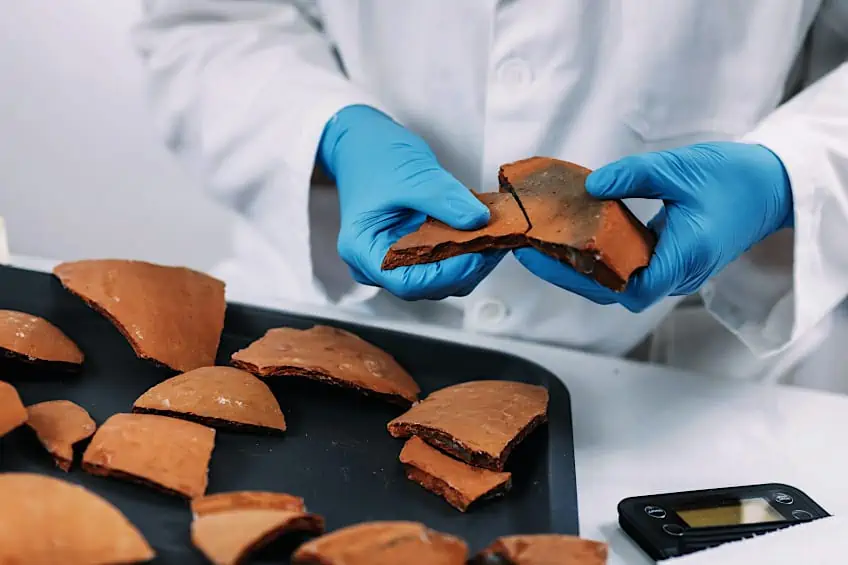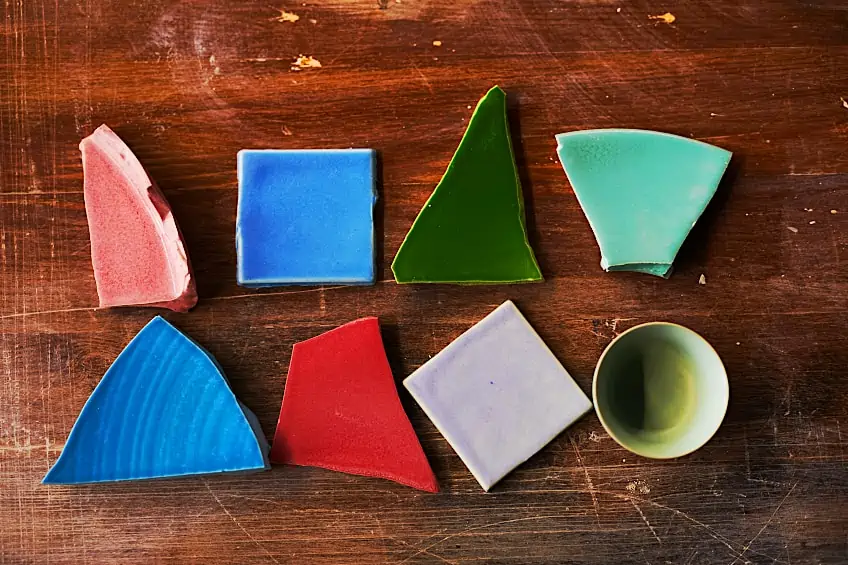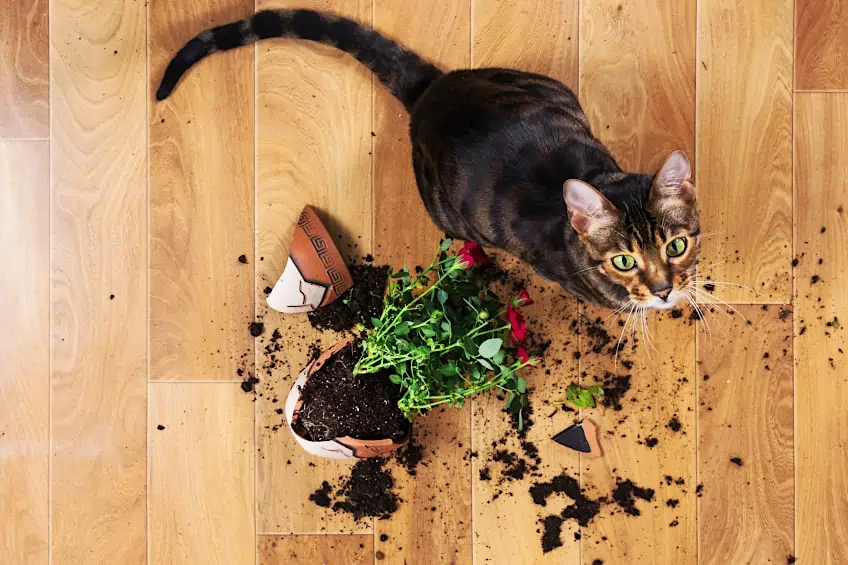Best Glue for Ceramic – How to Repair Porcelain and Ceramics
This post may contain affiliate links. We may earn a small commission from purchases made through them, at no additional cost to you.
As you were reaching for the tea, thinking to yourself, why on earth is it so high up, the sleeve of your gown caught the sugar bowl and brought it crashing down to the ground. Now you have done it, your grandmother’s sugar bowl passed down for generations is lying there in bits. What a conundrum! You are now faced with the task of having to stick them back together, but what glue should you use? In this article, we will talk about the best glue for ceramic, or porcelain. We will discuss the different properties of ceramic glue or porcelain adhesive, as well as the instructions for how to glue ceramics, so that next time you ask yourself the question, what is the best glue for repairing ceramics, you know which porcelain glue to go for.
Table of Contents
Ceramics and Porcelain Explained
Most people will sit back and admire their beautiful coffee mugs, tea sets, and even baking pans, without knowing what the material is and how it is made – let us enlighten you! Porcelain, or ceramics, is a delicate material that is made of clay minerals that are fine-grained and then glazed and fired at about 1292° Fahrenheit. After that, the material is put at an even higher temperature of 2192° Fahrenheit for a process called sintering.

The Two Types of Ceramics
- Fine Porcelain: This is typically used for crockery like dinner plates, bowls, and mugs, but also for basins in bathrooms. Fine porcelain has a very fine-sized grain and it is pigmented.
- Coarse Ceramics: This is a more industrial type of ceramics, used for building houses like the tiles for your roof. Coarse ceramics have a bigger grain that is used in its manufacturing.
Are you aware of industrial or engineering ceramics? Well, it is something that is used more and more often because they make brilliant insulators for electrical wiring. They are very useful and reliable with promises of waterproofing and resistance to extreme heat. This is achieved by the varied-sized grain that is used when industrial ceramics are made.
The more and more we learn about ceramics, from an industrial perspective, the more it is incorporated into the norm of construction. It is taking over the role that metals play in electrical insulators.
One thing to take note of is that the sintering process makes a difference to the type of ceramics you would be dealing with. One that is sintered at a high heat will have different properties to one that is sintered at low heat.
Types of Porcelain and Ceramics That Can be Glued
In terms of ceramic repairs, most types of ceramics can be glued back together with certain ceramic epoxy glues or ceramic adhesives that are designed for the job. When choosing the best glue for ceramics, you need to consider how big each part is and how you would need to apply it.
Porcelain and ceramics are quite porous materials which means this will affect the method for application and the type of porcelain glue or glue for ceramics you should use. Luckily for us, with each day that goes by there are new and improved adhesives available which means that you will be able to adhere different types of materials to your porcelain and ceramic repairs. This is because porcelain and ceramics have a surface tension that is particularly high and that helps it to retain the glue for ceramics.

Quick Look at What Materials Can Bond with Ceramic and Porcelain
In this table, we have provided you with a summary of what type of material that ceramics and porcelain can bond with and the type of adhesive that is needed.
Type of Material to Bond with Ceramics | Type of Glue Needed |
| Wood | ● Two-Component Epoxy Adhesive ● Superglue ● Assembly Adhesive |
| Hard Plastics | ● Two-Component Acrylic Adhesive ● Superglue ● Two-Component Epoxy Adhesive |
| Ceramics | ● Two-Component Acrylic Adhesive ● Superglue ● Two-Component Epoxy Adhesive |
| Porcelain | ● Two-Component Epoxy Adhesive ● Two-Component Acrylic Adhesive |
| Stone | ● Two-Component Acrylic Adhesive ● Assembly Adhesives ● Two-Component Epoxy Adhesive |
| Metal | ● Superglue ● Two-Component Acrylic Adhesive ● Two-Component Epoxy Adhesive |
Our Recommendations for the Best Glue for Ceramic Repairs
We have provided a list of our favorite and best glue for porcelain and ceramics below. If you would like, there are reviews of the different ceramic adhesives all over the internet for you to learn from. Keep reading to find out what we think are the best glues for ceramic and porcelain repairs.

Option One: Superglue From GORILLA Glue
Gorilla Glue is well known in the gluing industry, professionals and hobbyists swear by its strength for bondage. This is a perfectly good ceramic glue, not to mention, how fast the curing time takes to complete. This glue is suitable for repairing your crockery sets, favorite mug, and most homeware. In terms of the question, what is the best glue for repairing ceramics, this is one of the best glues for ceramics available on the market.
- No run control gel formula that is great for use on vertical surfaces
- Gorilla tough anti-clog cap helps keep glue from drying out
- Specially formulated for increased impact resistance and strength
- The tip of the nozzle of this ceramic glue is small so it can reach tiny spaces
- Dries within seconds
- No need for prior experience
- Works with minor repairs and large ones
- Not too expensive
- Works with bonding other materials to the ceramics and porcelain
- Resists high and low temperatures
- Water-Resistant
- If there is a substrate gap, or the pieces do not fit right, it will negatively affect the ceramic adhesive’s ability to work
- Be careful of the ceramic repairs for crockery that will have food in it because it is hazardous to your health
- Dishwashers will damage the ceramic epoxy
Option Two: GORILLA Two-Part Epoxy Syringe
An adhesive that comes in two components, be it ceramic glue, porcelain glue, or glue for metals, is needed for the most optimal results for your ceramic repair. 2-K Epoxy is the best option for this. Read on for more benefits of this glue.
- Strong, permanent, fast, and gap-filling glue for multiple surfaces
- Best for tough repairs requiring a durable bond and solvent resistance
- Dries clear, sets within 5 minutes, and is ideal for clean, easy finishing
- Only a small amount is needed and it goes quite far, making it very affordable even though the price seems high at first
- Works for gluing small pieces together
- Cures clear
- This adhesive is not prone to weather damage
- It is not prone to damage from impact
- No need for mixing the two components before it can be applied – it comes mixed already in a two-chamber cartridge.
- The curing time takes about one and a half hours.
- If the surface is not prepared properly then the adhesion might not work sufficiently.
- Cure time is lengthy, taking up to 24 hours in total
- Cartridges occasionally come less thankful, but customer service is more than willing to assist with this issue
General Properties of a Decent Ceramic Adhesive
For substrates to adhere sufficiently, there are requirements for the glue to have certain qualities. This is not something unique to porcelain glue, or ceramic epoxy. But if you are wondering what is the best glue for repairing ceramics or the best glue for porcelain, the following aspects should be checked off the list:
- Of course, as logic provides, the type of ceramics or porcelain you want to glue will determine what type of glue you should use. Super Glue is suitable for all stoneware, but an adhesive of two components would better suit the job if other materials like metal are added into the adhesion.
- Clamps are not an option for holding the substrates together, which means you should rather work with glue that dries faster and cures quicker. Again, superglue is a great option to use in this case, especially if the pieces that you are gluing back together are really small.
- Large areas that need to be glued together would benefit from using an adhesive designed for surface areas, whereas the small area would benefit from a syringe dose of the glue because only a small amount is needed at each time.
- If you are looking for a short curing time, then a superglue will do the trick. But, if you are looking for a more durable repair, then a two-component glue is the best for the job.
- Make sure that the glue you purchase will dry looking clear so that the glue is not visible after the repair is done.

How to Glue Ceramics
If you have come here to learn how to glue ceramics, then this is the part where it gets good. Keep reading for more information and how-to knowledge on glue for ceramics and how to use it. First, you will need the following tools and materials:
- Gloves that can be disposed
- A glue that is suitable for ceramics
- Acetone to clean up any messy glue spills, or any mess in general.
- If there are lots of edges that do not quite meet up, there is such a thing as ceramic filler, which will give the surface a smoother appeal
- Sellotape to hold the pieces together temporarily, while the glue cures completely
- Something to mix each part of the two-component adhesive, if that is the glueyou chose in the end
- To remove any unwanted dried glue, use a razor blade
- A bowl that has cotton wool lined around the inside of it
- Repair paint stick
Once you have gathered all of those tools and materials, you can begin with the repair. Follow the next few steps accordingly, and you will not have any problems.
Preparing the Surface
With all repairs, paint jobs, and varnishing, preparation of your surface is needed. You could use the best glue for ceramics available on the market, and the job would be a botch if the surface preparation was not completed – or ignored completely. Make sure that each piece you are gluing is free of any dirt or grime, including oils. These can be cleaned off with acetone which is perfect because it evaporates so quickly and will not leave the porcelain wet.

It is advisable to wear disposable gloves when preparing your surface for gluing because acetone is highly saturated in chemicals so it is not great for skin.
Now for the Glue
Always make sure that you have read the label of the glue, for each manufacturer will have specific requirements for each glue. From the drying time to the cure time. This is also to find out whether the adhesive you chose should be used with generous amounts or not. You can use a fine brush to apply the glue onto the pieces if the nozzle is not a fine tip like with superglue. Now, you wait for the flash-off time to finish.
If the ceramic item you are repairing is not overly brittle like most ceramic objects, you can use a clamp to hold each substrate together, or some tape if it is too delicate. Finally, the ball or Tupperware that is lined with the cotton wool is explained. It is specifically for the smaller items that you are gluing that need a safe place to be left to dry.
If the item you are gluing is too large for the bowl, make sure that it rests out of the way and there is no danger of breaking more.
Now to Remove any Visible Edges and Fill Them In
Any residue of the adhesive should be removed immediately after you have finished the gluing process. You can use that razor blade we mentioned earlier and it will be better achieved if you allow the glue to dry before you try to remove it. If you would rather not smudge the surface of your ceramic item, then acetone is not advised. Always give the ceramic item that you repaired enough time to cure, we suggest giving more than the manufacturer suggests on the label – just to be safe. Wait at least a period of 24 hours before you put the item to use again, but sometimes 24 hours will be needed.
An epoxy filler is perfect for any cracks and gaps in the ceramic substrates and it can be applied with a small paint repair stick. Make sure that you have cleaned and prepared the surface by cleaning it with acetone. Porcelain filler can take up to 36 hours to cure properly, which should be taken note of.
As you have most probably realized after reading our informative article about the best glue for ceramic and ceramic repair, it is not too difficult a task, even if it is your very first porcelain glue attempt! Everyday DIY enthusiasts can use ceramic glue and fix up their precious pottery and other porcelain items that have broken over the years!
Frequently Asked Questions
How Do I Glue Ceramics?
Firstly, you must make sure that the surface has been prepared properly and cleaned sufficiently. Apply the glue lightly, or liberally, according to the type of glue you are using, and stick the pieces together fast, because ceramics are very porous. Use some tape to hold the pieces together whilst it cures.
Can Superglue Be Used to Repair Ceramics?
Superglue is one of those wonderful adhesives that will work on so many items and varying materials. The answer is yes! You most certainly can use Superglue to repair your ceramic items.










